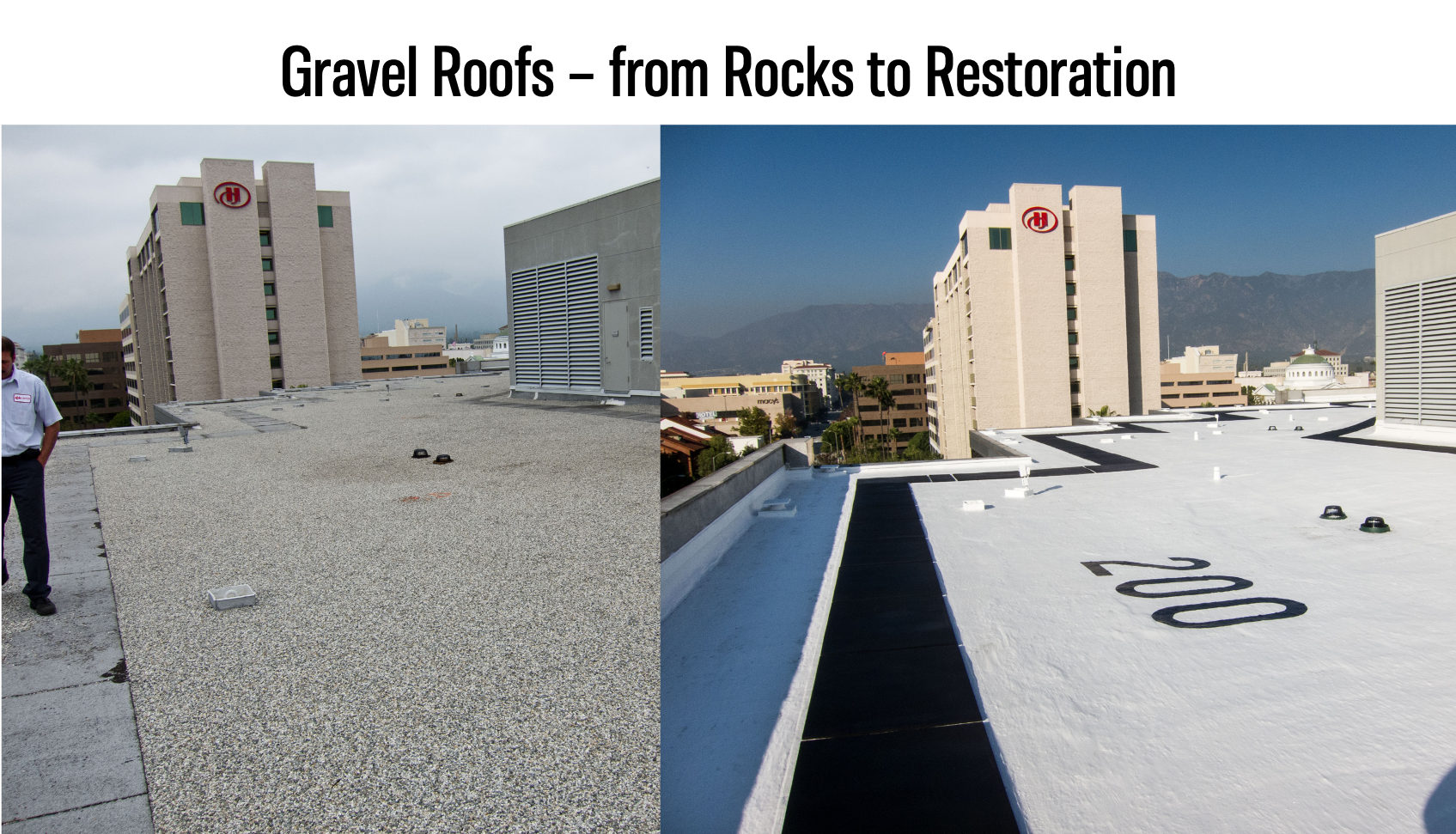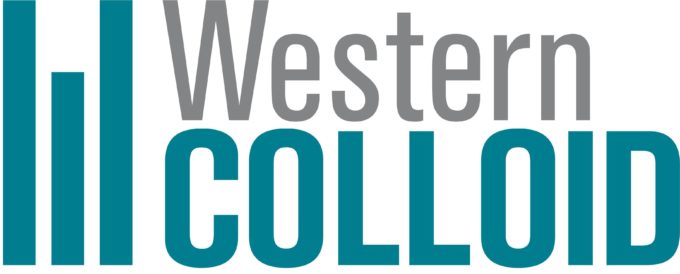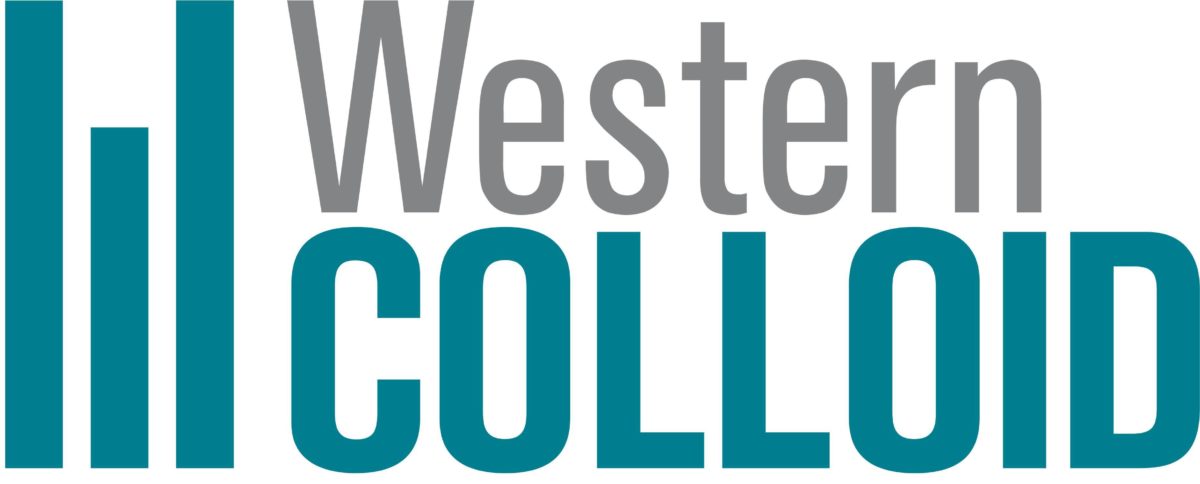
Your Gravel Roof – a History of Solutions
Have you ever wondered why they installed them? Then, how to restore them?
Let’s go back to the earliest forms of roofing in the early 1900’s with “built up” roofing. Which consisted of melted asphalt, and they will put it on a roof with layers of reinforcement, (felt). They chopped up old rags and made it into paper. And that paper was then saturated with asphalt, uh, a form of asphalt, and they would layer the hot asphalt and felt. Eventually fiberglass displaced, the organic felts. But using the same principle, they “built up” a roof in, in two layers, three layers, four layers, but they needed something to surface it with.
Early applicators had two problems with surfacing a roof. One was the UV degradation in some parts of the country. They just top coated the roofs with asphalt, very hot and thin, and put in every two or three years, just like they do a driveway. Essentially, they would put another coat of asphalt on it, leave it black and let it weather. But that brought up other problems with big fires.
Various governments decided to establish fire ratings. Underwriters Laboratories, and other testing companies started testing roofs for their liability. Now we need roofs that aren’t going to burn, and ideally even help against fire as certain forms of asphalt can burn readily. Somehow, we needed those roofs to have some fire and UV resistance. In parts of the country where we have a lot of direct sunlight that asphalt will oxidize away in the direct UV sunlight.
The solution was simple. There is one thing available that is almost universal around the country and that is gravel and rock. Whether you are in Maine, Florida, Ohio, Oklahoma, California, or Washington. You can get gravel, and gravel does three things.
Number one, gravel, or rock adds a little bit of weight to the roof for wind resistance. Second, it adds a UV resistance because the sun can’t penetrate it. It doesn’t keep the temperature cool, but the UVs are not going to degrade the asphalt. And third, it is fire resistant. If you put enough gravel on a roof, you can get a fire rating with a paper towel! It is a terrific barrier to the heat.
Gravel did a great job. The proof is in the many roofs all over the country that were done with gravel. Not to be confused with granules, granules are something very small that they put on a cap sheet in the factory, but it does the same thing gravel does. It’s a UV barrier and a fire barrier. And those are still common today in modified bitumen and granularized rolled roofing.
With all the gravel roofs nationwide, the challenge arises of re-roofing. Instead of the expensive remove and replace option, we needed to come up with a way to restore the gravel roof.
Coatings were not readily considered as an answer to a gravel roof. As with granulated rolls and single ply’s they are smooth. A coating could be easily applied, but what do we do with this gravel roof?
Rock and Gravel has a very rough surface texture because a good portion of the gravel has to be, by the specification, embedded in the asphalt. Applicators put on that layer of asphalt, then a layer of gravel that is uniformly embedded into that asphalt that doesn’t come off very easy. And you want that to be on there. That was important part of a gravel roof.
Gravel roofs restorations started to gain traction about 40 years ago. Companies like Tremco, leaders in the coating industry, and Garland Company had products that they used on gravel roofs. Those were originally solvent base. Essentially what the early adapters did they did was to go over that gravel roof that was all dried out and cracking and put this solvent-based asphalt product on it that would lay on there in a very thick layer, and the solvents would migrate down into the old asphalt and soften it up. They had a lot of success for, for some years, but the number of solvents that were used with time made that not very desirable as they dried out and they tended to crack again.
For over 40 years Western Colloid has been successfully restoring gravel roofs, and that’s because we make an asphalt emulsion. And an asphalt emulsion is an asphalt that isn’t readily flammable. Plus, it is relatively inexpensive, so higher quantities are not cost prohibitive. If you were to use acrylics to build up the roof, or a plural component like some products, it would be very expensive because by the time you covered the gravel to fill in the voids and smooth out the roughness you would have a very expensive roof with a lot of gallons applied.
Asphalt emulsion is a combination of a straight run distilled asphalt. When it is mechanically ground with a bentonite clay and water it becomes a colloidal product, (which hence the “Colloid” in our name.) Once the water evaporates, it’s a combination of bentonite clay and asphalt. And that results in two things, it’s very waterproof and it’s a low-cost product. Also, it has none of the traditional asphalt fumes.
Emulsion is sometimes challenging as far as estimating the amount needed. We have specifications, but even our specifications vary depending on the varied gravel sizes used in different parts of the country.
As a rule, most of our gravel roof specifications end up using between a minimum of 18 gallons to 30 gallons of emulsion per 100 square feet. Contractors say, “How much weight am I putting up there?” Think of it this way, you just took off 200 pounds of loose gravel and you are going to put back on 40 pounds of emulsion. You will not be even close to what you took off when you cleaned off the gravel.
Another thing to keep in mind is in estimating asphalt emulsion on a roof is that it is between 40 and 45% solids. It’s not high solids product, which means 55% of that evaporates away as water. It leaves less than half of the volume. When you spray on three eighths of an inch thick it will dry to one eighth of an inch thick. You must keep that in mind that you are putting on a lot more than what you think. In a water-based system water must evaporate and that roof must dry and cure.
But for one thing, we never do a light spec on gravel where we might do a one ply of polyester reinforcement over a good cap sheet roof. We would never do one reinforcement over a gravel roof. This isn’t a band aid roof. This is a substantial reinforced coating system that you’re putting on there.It does take some training, we’ve even helped other manufacturers, because after we put on an asphalt emulsion flood coat on a gravel roof, let that dry out well and then come back with at least two ply’s of polyester fabric in asphalt emulsion and possibly one ply in acrylic. But at least a topcoat of acrylic depending on drainage and what part of the country.
For the topcoats on these gravel projects, we choose acrylics 50 years ago and it still works today. We like the water based because in the Western US and we find that they work well, especially if they’re reinforced on a roof like this.
A great example of this solution is a very large, well-known building in Texas some years ago that was done with a combination of a flood coated gravel roof that was a chopped glass and emulsion with additional plies of polyester and emulsion, finished with polyester and acrylic on top. This high profile building saved close to a million dollars as it had a heavy insulation on it along with the gravel roof. If they had to tear off the entire roof with the insulation and re-install another product it would have been a very costly roof.
On a side note that building in the Dallas withstood a huge hailstorm that came through with five inch hail that Western Colloid specification and products roof came through and with flying colors. Our gravel roof specifications like those mentioned above have FM ratings, both with chopped fiberglass reinforcement and polyester reinforcement over gravel for successful hail tests.
If you have a gravel roof project coming up Western Colloid has a terrific solution to tearing that roof off. In addition to the savings mentioned above we can help your provide a renewable, sustainable, highly reflective roof system for that building and that building owner, which will bring down energy costs, heating and cooling costs.
Contact Western Colloid today for more information.


